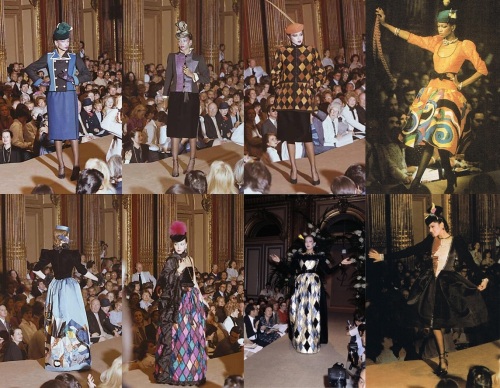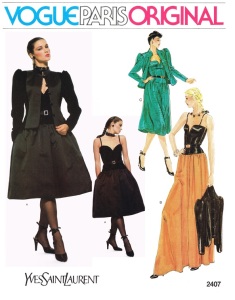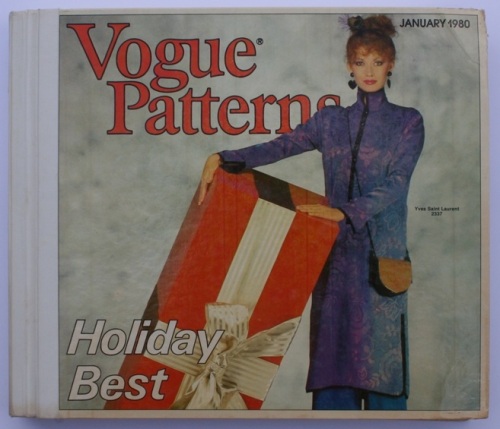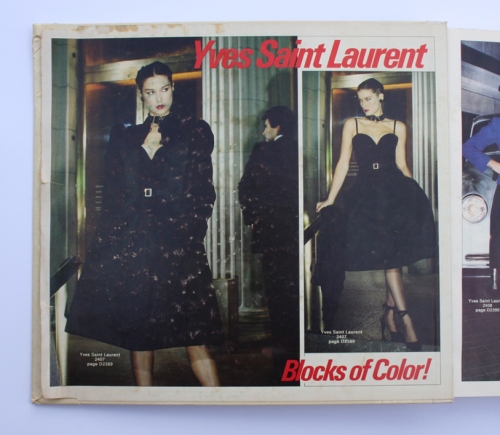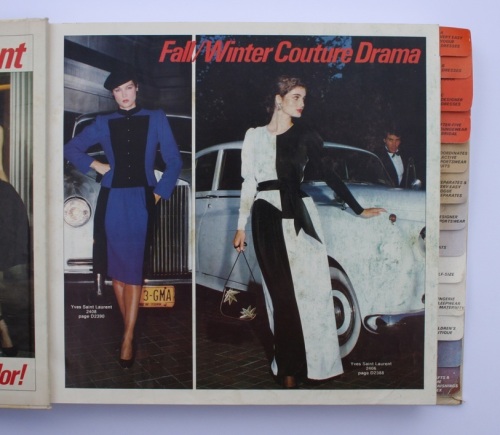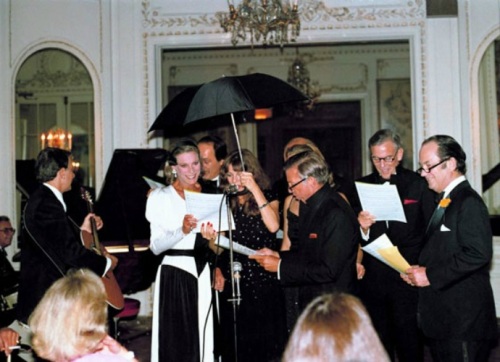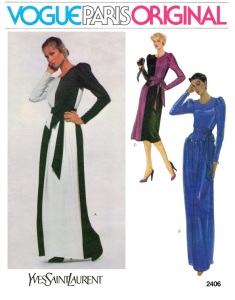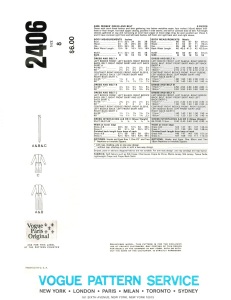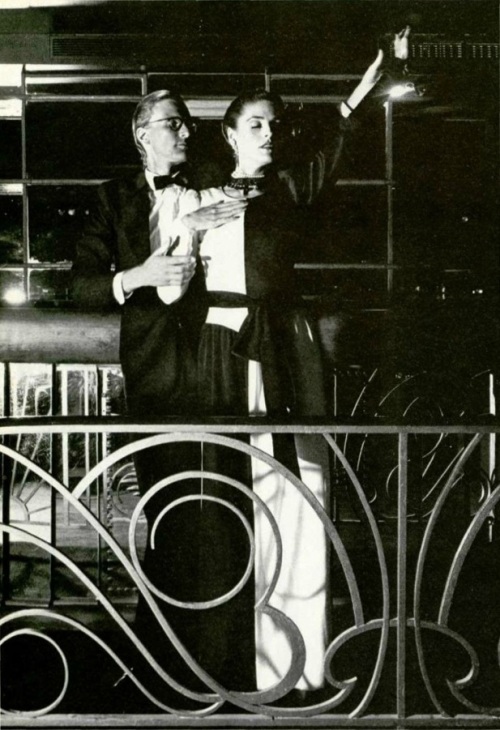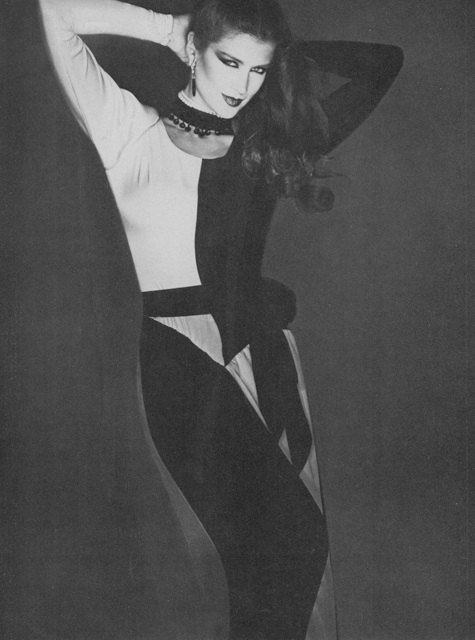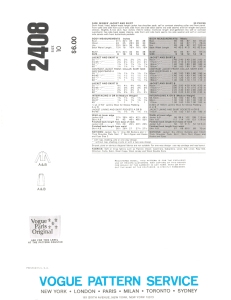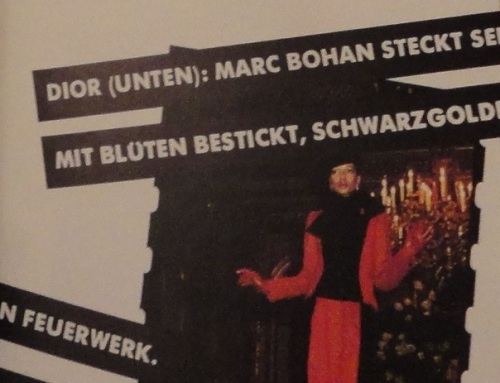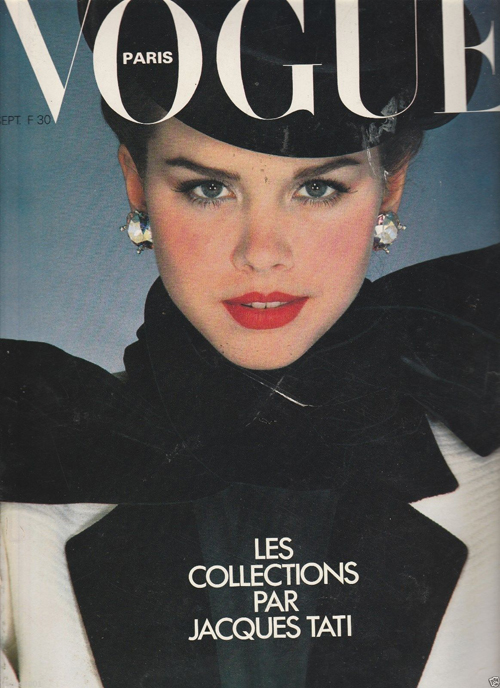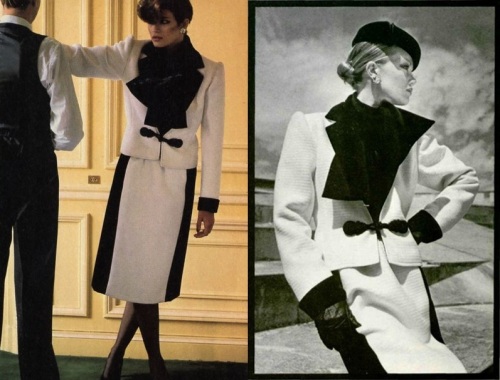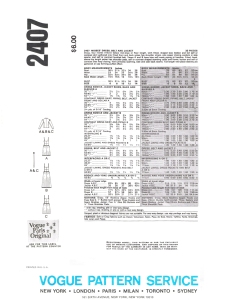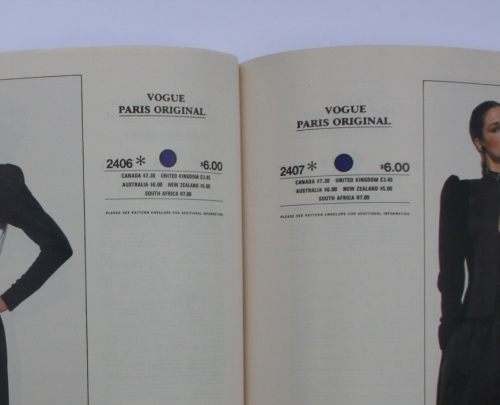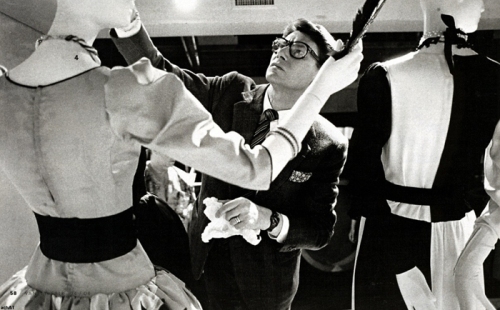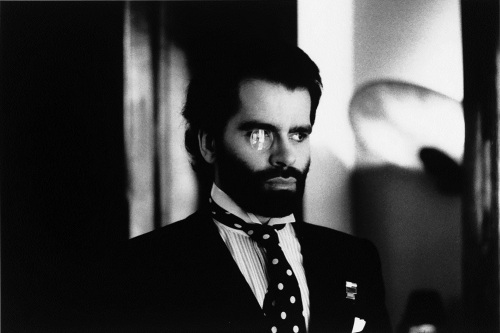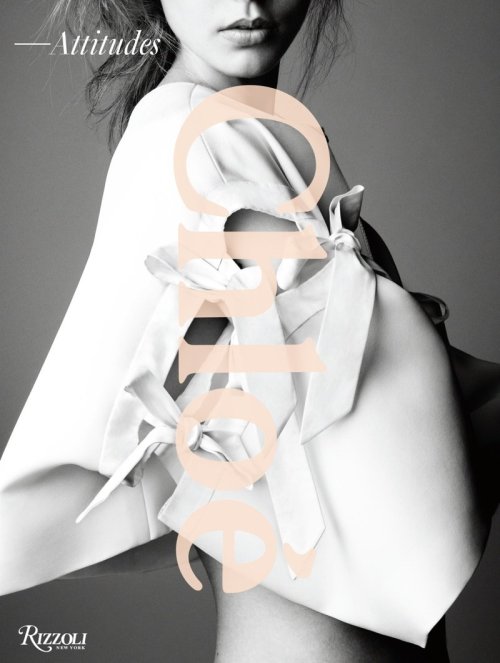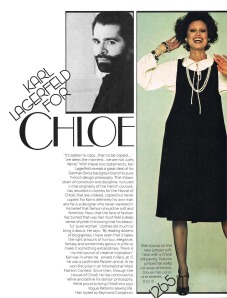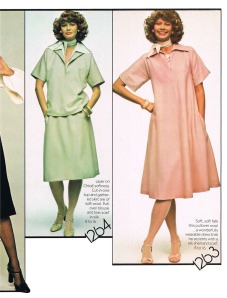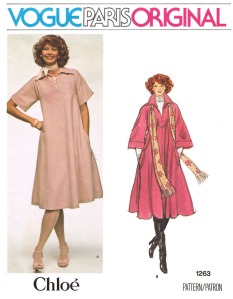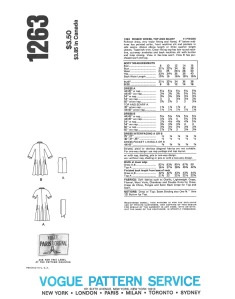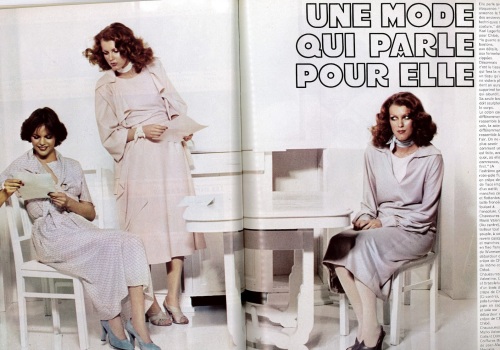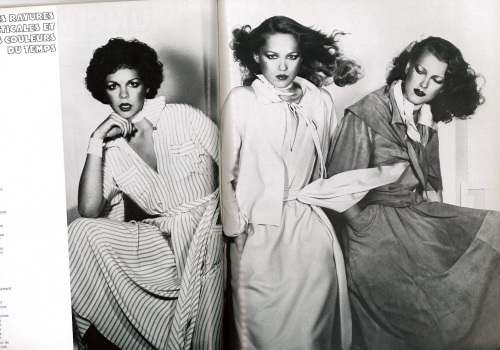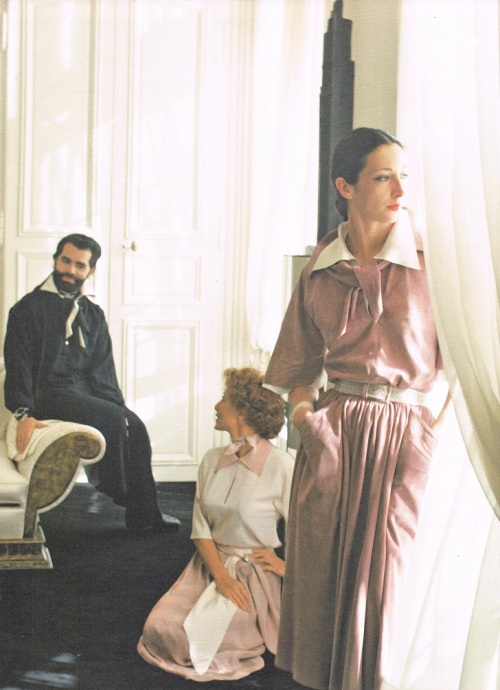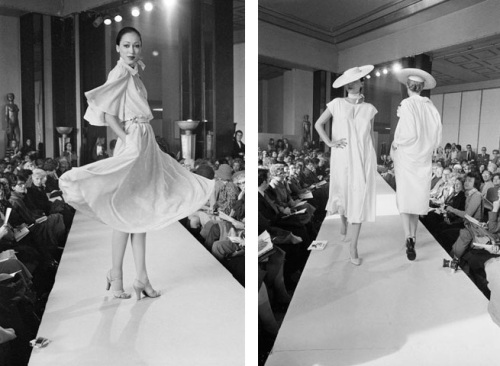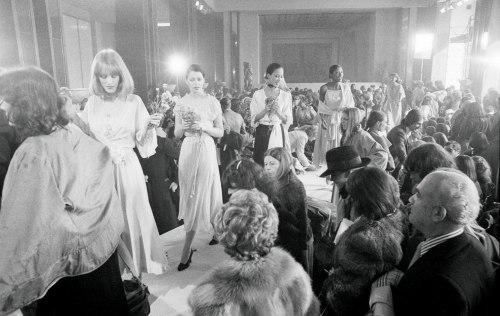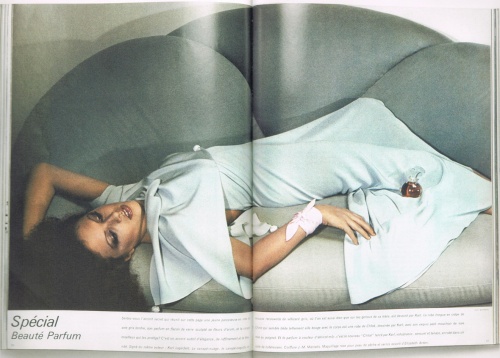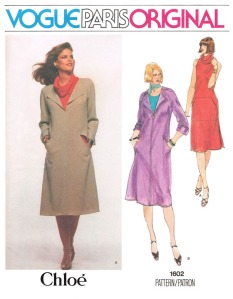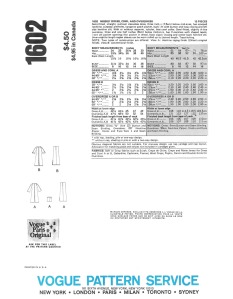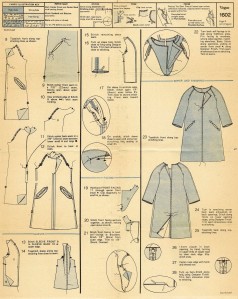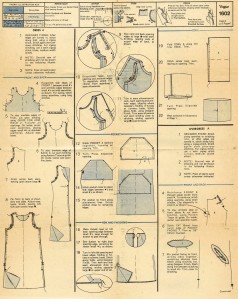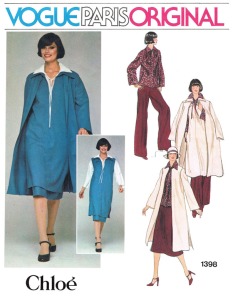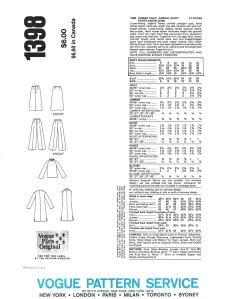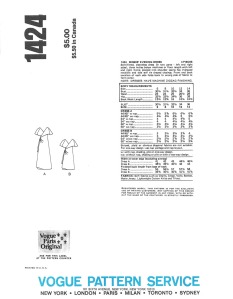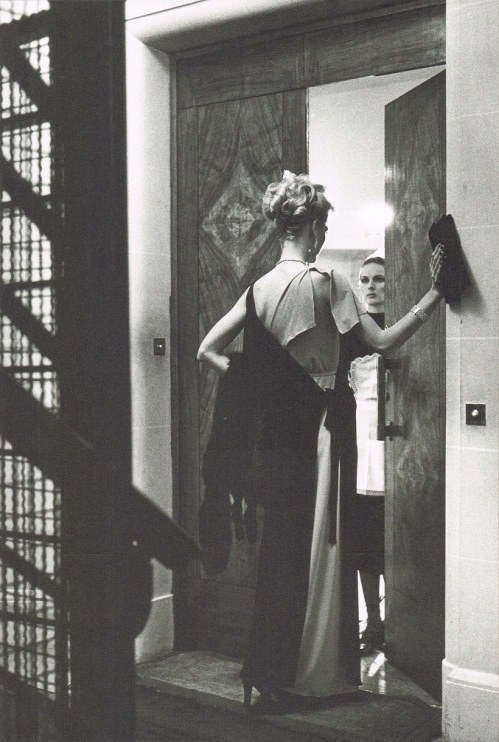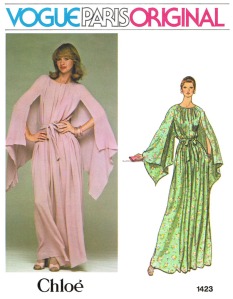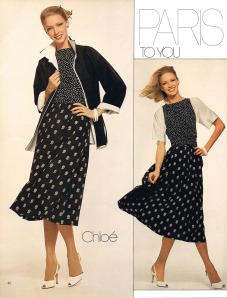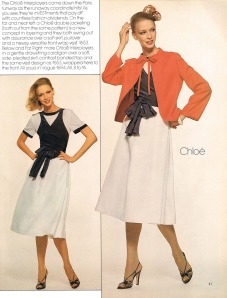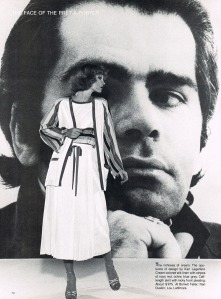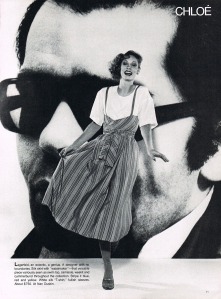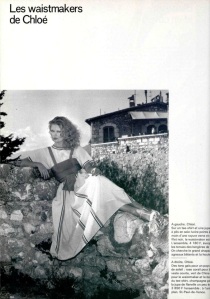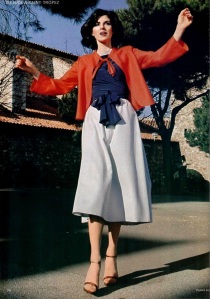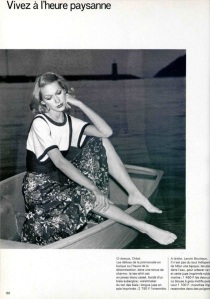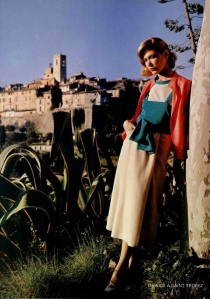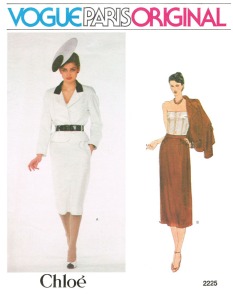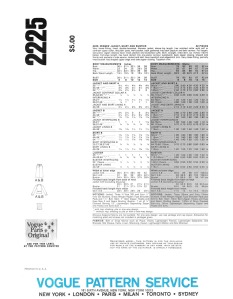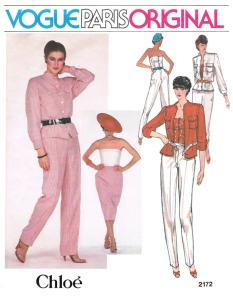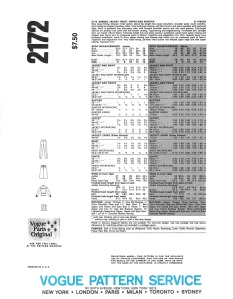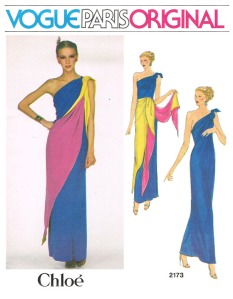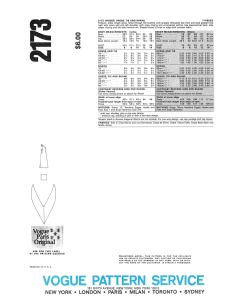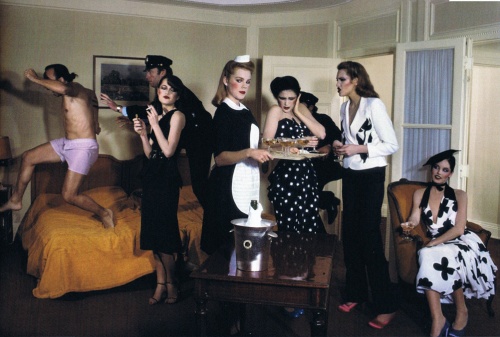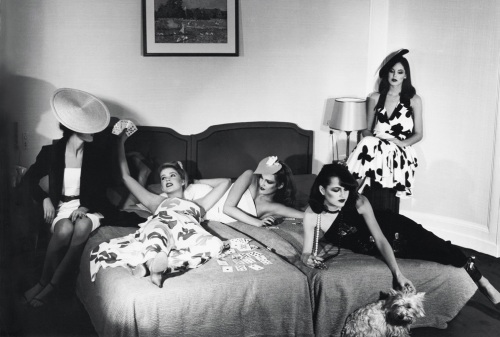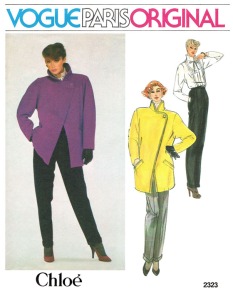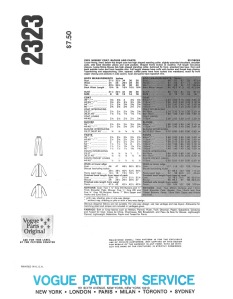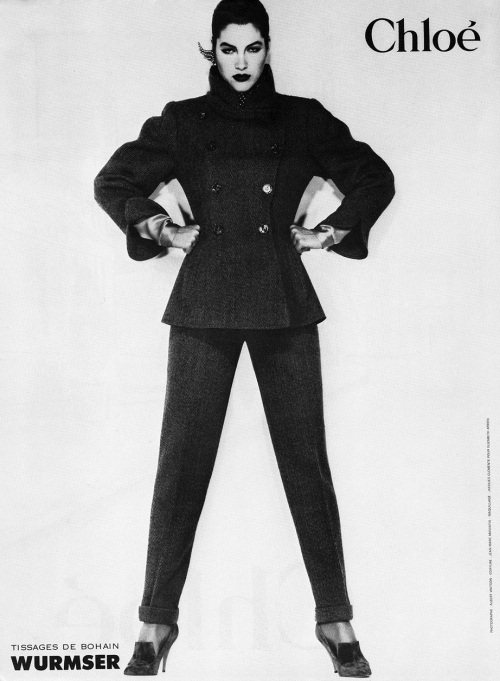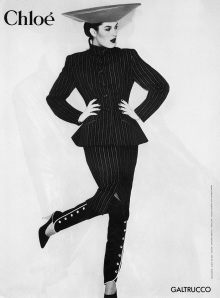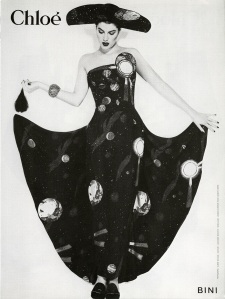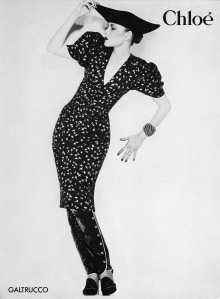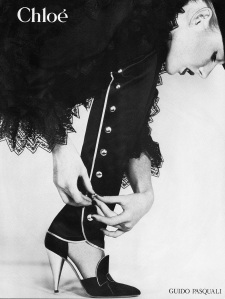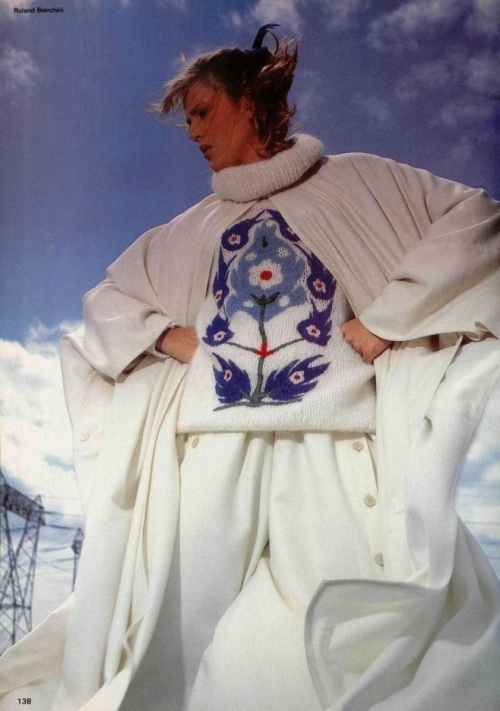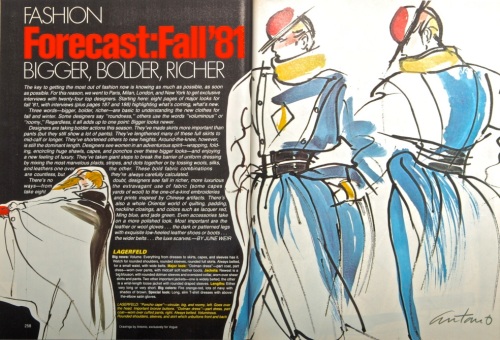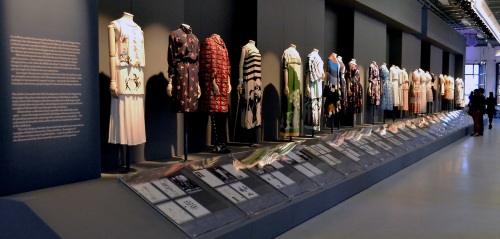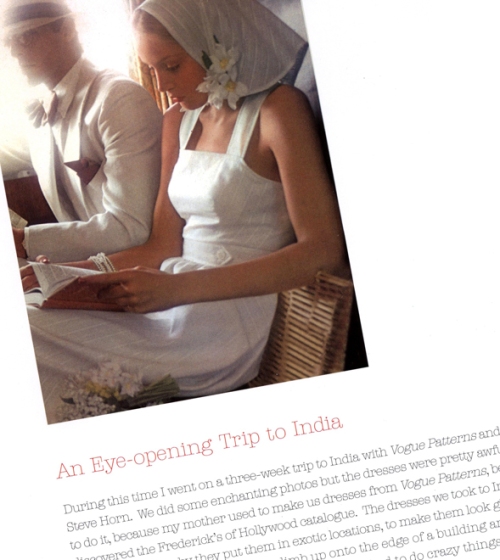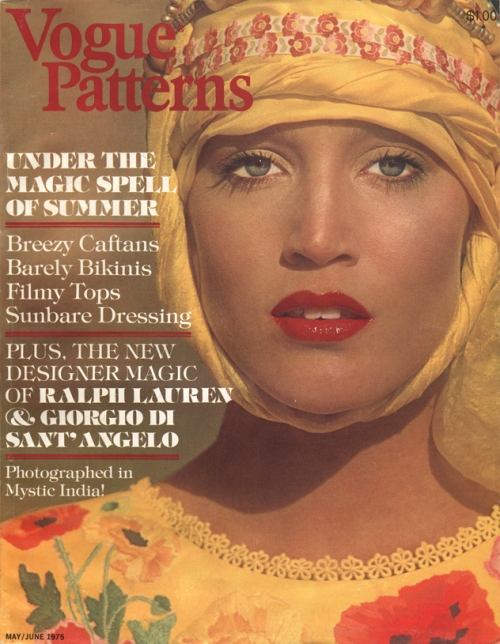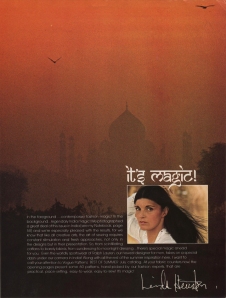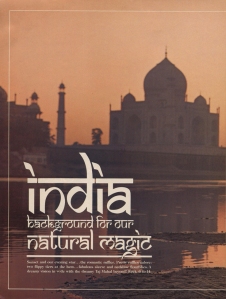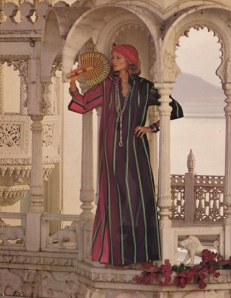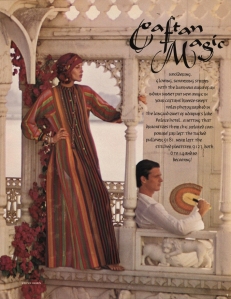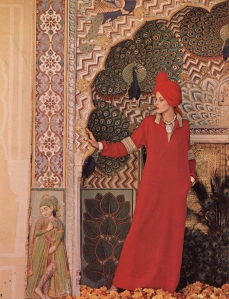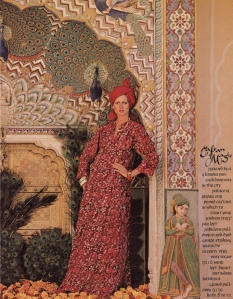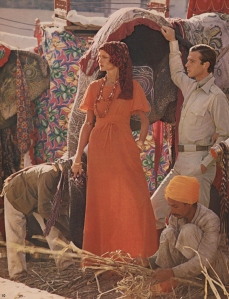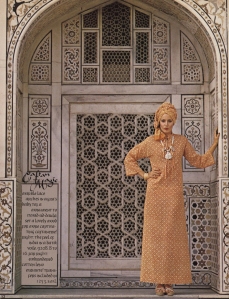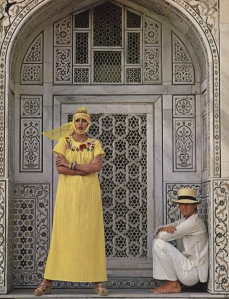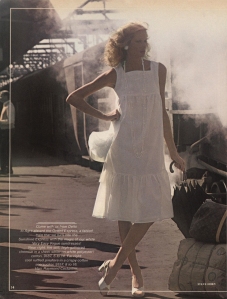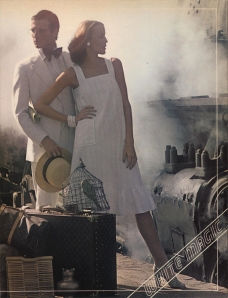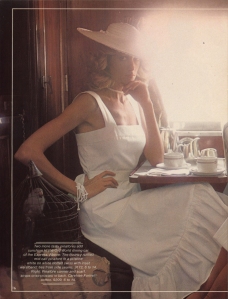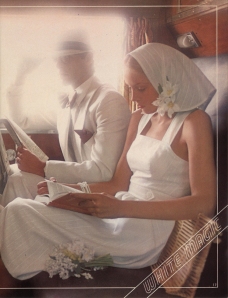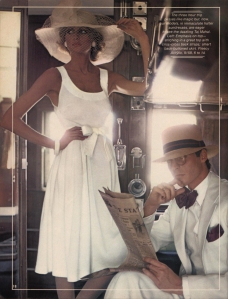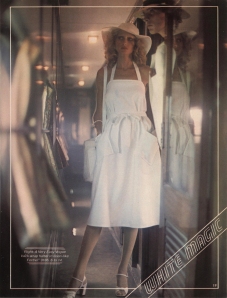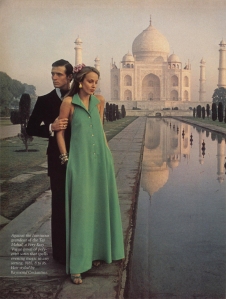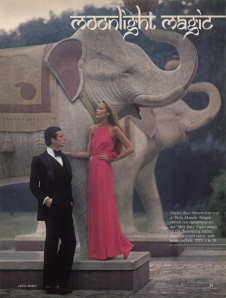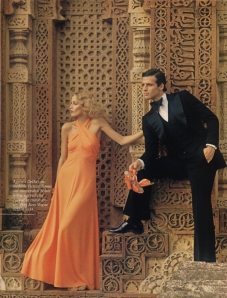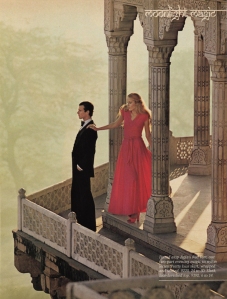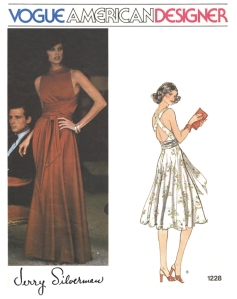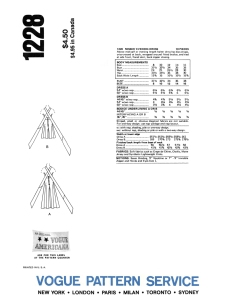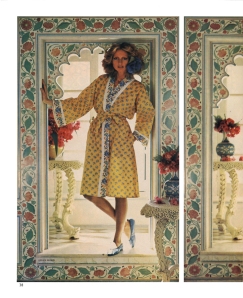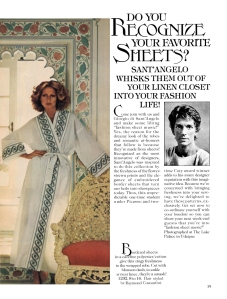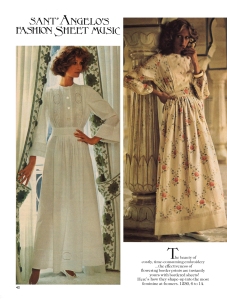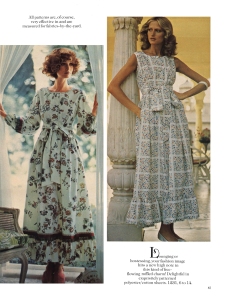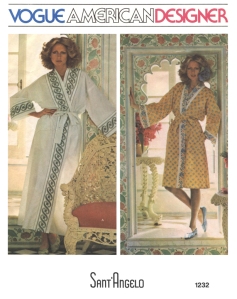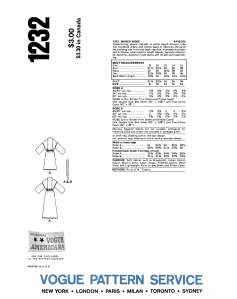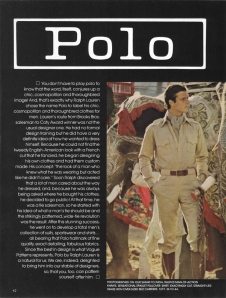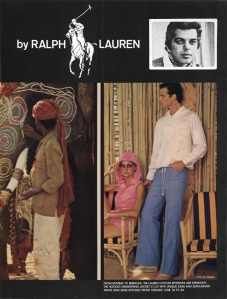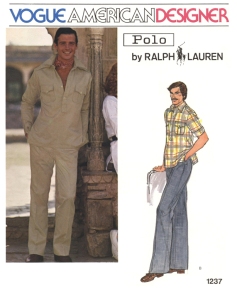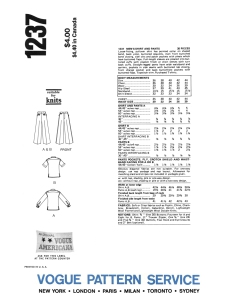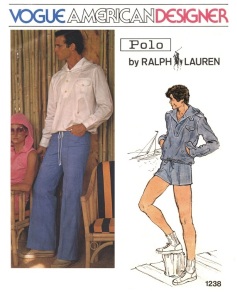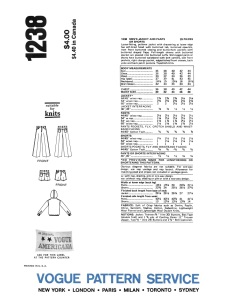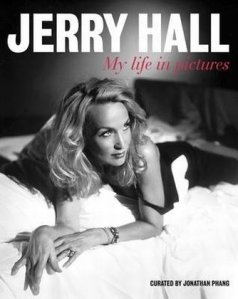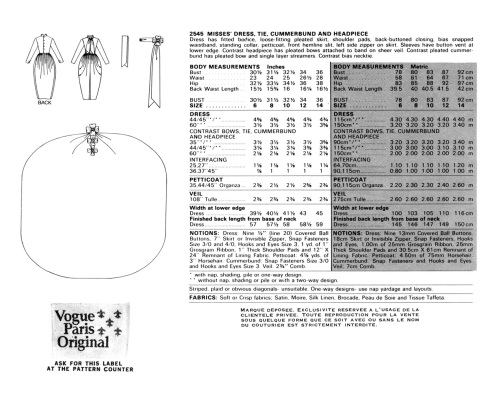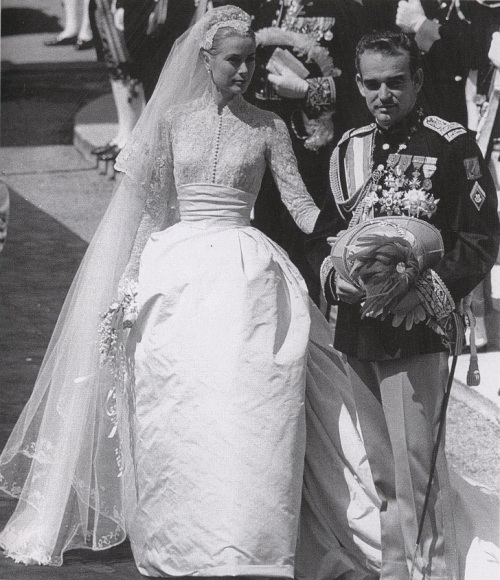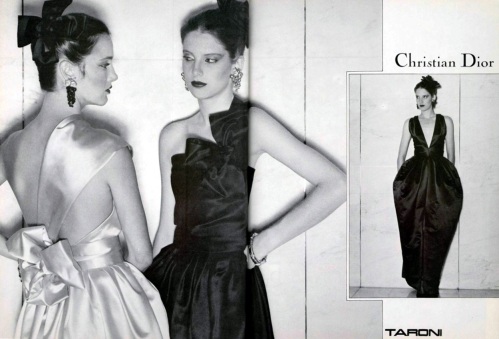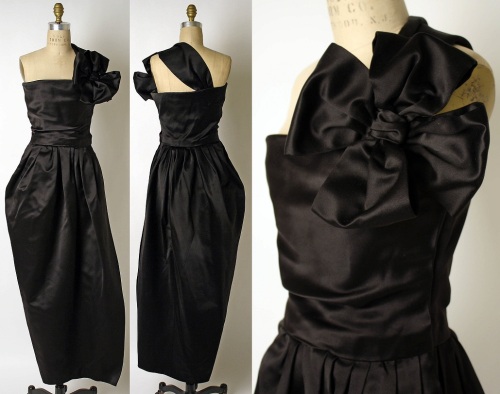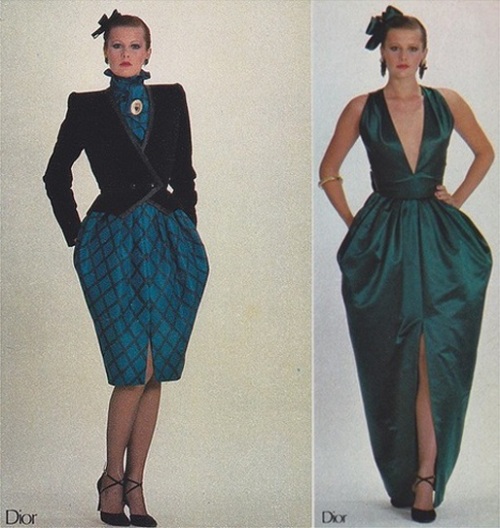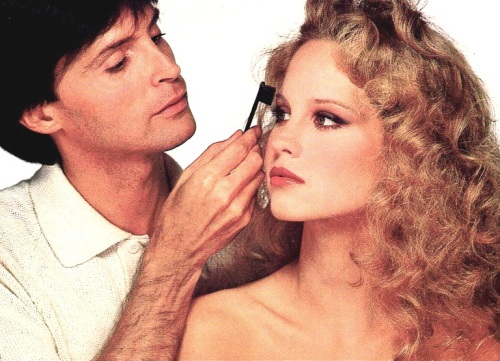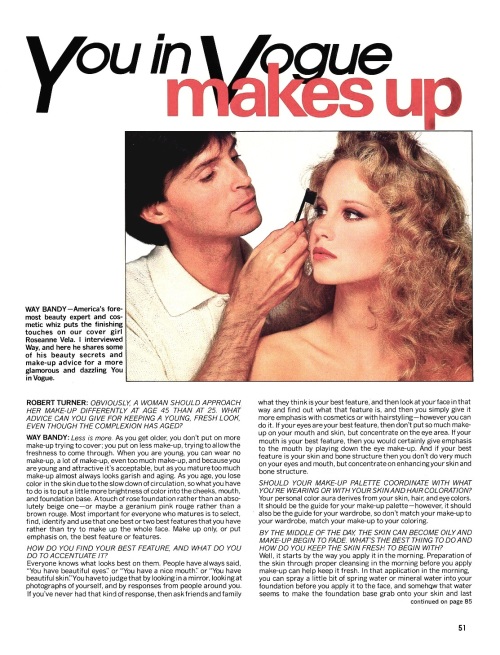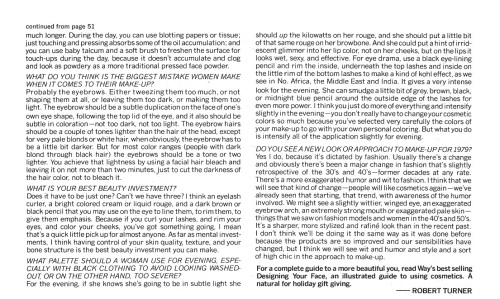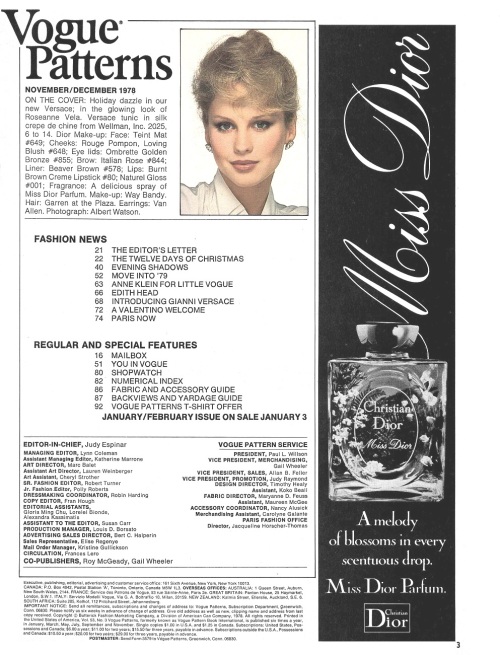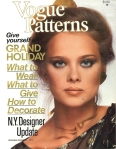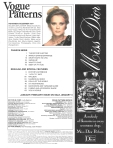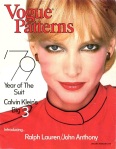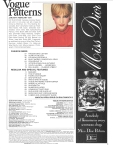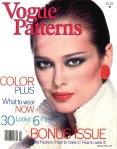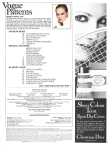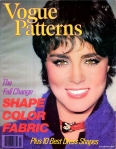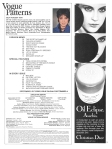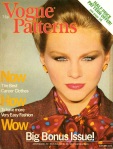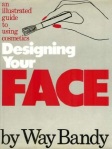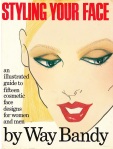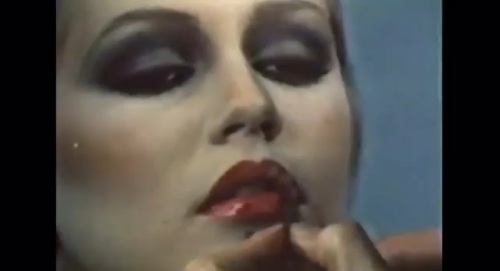Couture Drama: Yves Saint Laurent, Fall/Winter 1979-80.
On July 25th, 1979, Yves Saint Laurent presented his Haute Couture collection for Fall/Winter 1979-80 at the Ritz hotel in Paris, culminating in a standing ovation from the audience. He offered the collection as “an homage to Serge Diaghilev and to his collaboration with Picasso”.
Later that same year, Vogue Patterns had drawn three looks from Saint Laurent’s Diaghilev/Picasso collection and delivered them in the form of three patterns: 2406, 2407 and 2408.
These patterns were first introduced to North American customers in the January 1980 counter catalog, just in time for the Fall/Winter 1979-80 Holiday season (which I believe would have actually been available in-store for December 1979, however England, and possibly other countries, had to wait one more month for the February 1980 catalog to reach stores).
The catalog offered ‘Blocks of Color!’ and ‘Couture Drama’ by way of Yves Saint Laurent.
Just inside the front cover of the catalog, the Yves Saint Laurent originals are shown photographed on models Clotilde and Eva Voorhees, two top models of the period (Clotilde can also be seen on the pattern envelopes for 2407 & 2408. She was a Saint Laurent favorite for the runway and she even appeared in a television advertisement for the perfume ‘Rive Gauche’ in 1980). According to the ‘Guide for Fabrics and Accessories’ toward the end of the catalog, 2407 is shown with Yves Saint Laurent shoes, and 2406 with Yves Saint Laurent shoes and handbag.
The photographs evoke the excitement of heading out for a night in style to dinner, a fabulous party, or formal occasion. As long as you were quick getting the pattern and then even quicker at sewing, or getting someone else to make up your pattern, you could have been seen wearing the same style in the same season as one of Saint Laurent’s Haute Couture customers!
Nan Kempner, a woman considered to be one of the best-dressed American women of her time, wore the design that Vogue 2406 was based on. This gown was made from contrasting blocks of black and white silk satin-crepe.
This is a strikingly graphic design that seems to evoke the bold cubist elements of Picasso’s designs for the characters of the French Manager and the American Manager in the 1917 Ballet Russes production of ‘Parade’.

Photograph of the ‘Manager français’ character from the original 1917 Ballet Russes production of ‘Parade’, with costumes and sets designed by Pablo Picasso.
Also, in one of Picasso’s sketchbooks from around 1916, as published in the book ‘Je Suis Cahier: The Sketchbooks of Picasso’ (edited by Arnold & Marc Glimcher), there are drawings of Harlequins and, although there was no Harlequin character in ‘Parade’, it is believed that these drawings reflect some of Picasso’s first ideas for the production of ‘Parade’. There can be seen a close resemblance of line between the Harlequin drawing below and the design lines of the dress from pattern 2406. Perhaps those sketches were of some inspiration for Saint Laurent?
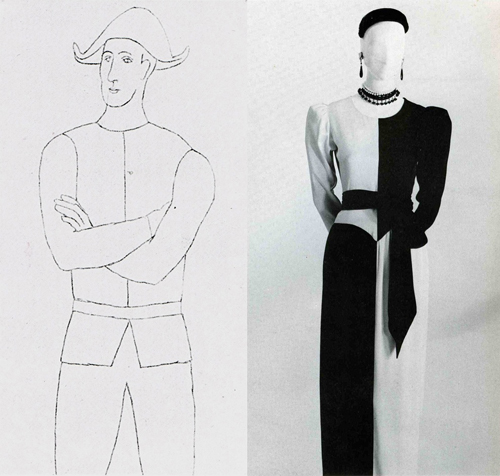
Drawing by Picasso of a standing Harlequin, pencil on paper, 1916, & YSL’s ‘Picasso’ gown, as exhibited at The Metropolitan Museum of Art, New York.
The black and white ‘Picasso’ gown was photographed for Vogue Paris’ September 1979 issue and, as pictured below, for L’Officiel’s fall couture collections issue, No. 655, 1979.
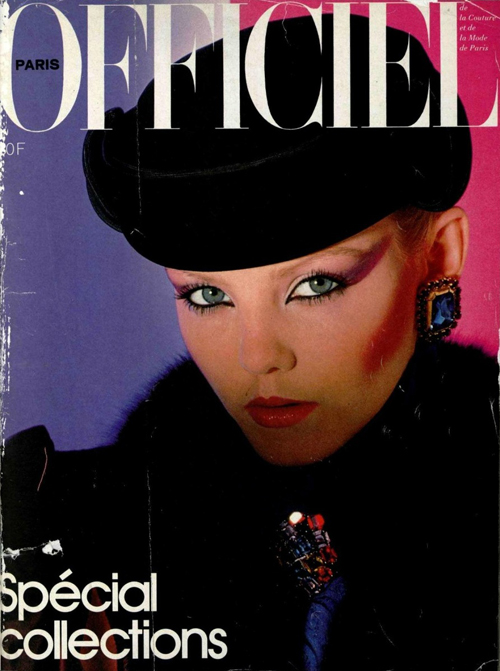
Front Cover of L’Officiel No. 655, 1979, ‘Special Collections’ for Fall. Model wears Yves Saint Laurent.
The editorial shot below shows model Clotilde (once again) wearing the black and white ‘Picasso’ gown (I am unsure of the publication that the image originated from). Thanks to Supermodelicons.com for this image.
The black and white gown has also been included as an exhibit in many of the retrospective exhibitions for the fashion career of Yves Saint Laurent, the first being the 1983 exhibition ‘Yves Saint Laurent’ at the Metropolitan Museum of Art, New York, conceived and organized by Diana Vreeland – the very first of its kind at the Met dedicated to the work of one living designer. Others were the exhibitions ‘Yves Saint Laurent Style’ at the Montreal Museum of Fine Arts in 2008 and the de Young Fine Arts Museum of San Francisco in 2008/2009, and the exhibition ‘Nan Kempner, American Chic’, at the Met in New York in 2006/2007.
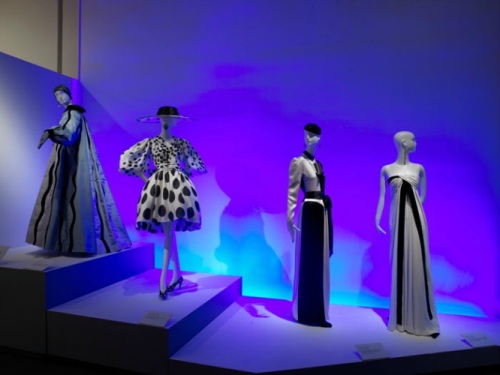
Installation from the exhibition ‘Yves Saint Laurent Style’ at the de Young Fine Arts Museum of San Francisco, November 1 2008 – March 1 2009.
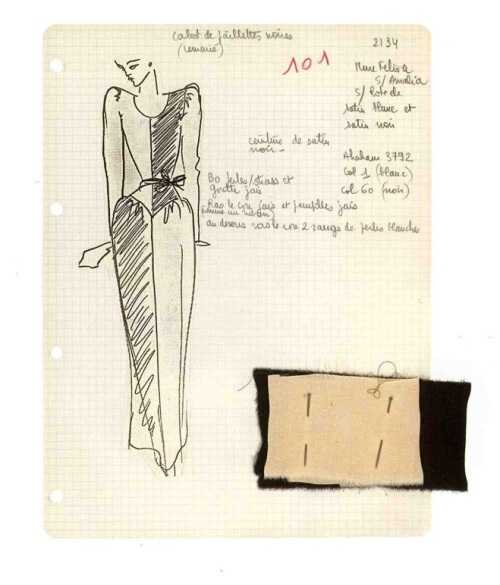
Photograph of an Yves Saint Laurent original illustration with silk satin-crepe fabric swatches, from the exhibition catalog ‘Yves Saint Laurent Style’, 2008.

As seen in the exhibition ‘Nan Kempner, American Chic’ at The Metropolitan Museum of Art, New York, December 12, 2006–March 4, 2007.
On to Vogue pattern 2408: a suit of skirt and jacket that features contrasting blocks of black and royal blue.
An almost identical suit to that of 2408 was also shown in the same collection, only it consisted of blocks of red and black, as seen below in a runway photo published in the October 1979 issue of German Vogue (modeled by Saint Laurent muse, Mounia).
In the New York Times article ‘Diaghilev Inspires Saint Laurent’ published July 26, 1979, Bernadine Morris wrote:
“What is likely to hit the copyists’ market first are the two-fabric or two-color suits, which are not too subtle to be easily understood. A ribbed white wool jacket with black velvet collar and lapels is paired with a white skirt with velvet side panels. very slimming, those side panels.”
It is interesting that Bernadette mentions the two-fabric and two-color combinations, as this is what Vogue Patterns selected from the collection – and for logical reasons. Usually the only means for most home sewers to recreate a designer outfit from a sewing pattern was through fabric and with trim, such as piping and purchased braid. Therefore, any designer looks that would involve highly skilled applications such as intricate embroidery/beading or applique wouldn’t have been commercially viable for a pattern company’s concern.
Also, Bernadette Morris mentions a white and black suit with “slimming” side panels to the skirt – these panels were repeated on the skirts of the blue/black suit of pattern 2408 and the red/black suit, pictured above. The white and black suit with velvet collar and lapels made the cover of Vogue Paris and was photographed for U.S. Vogue and for L’Officiel magazine.
Finally, there is pattern 2407: a romantic ensemble of full-skirted cocktail dress and jacket with the silhouette that was most dominant for evening in the collection – a full skirt of either below-knee or evening length, gathered in at the hip. The upper body for most evening looks was fitted and, if with sleeves, topped with a ‘puffed’ sleeve head. The contrasting blocks of this ensemble are more tonal by way of the luxurious textures of black velvet and black satin. The full skirt is reminiscent of the ballet tutu, and the corselet-style top and satin sandals with criss-crossed satin ribbons evoke the romance of the ballet.
Below you will see some examples of other dresses from the collection that share similar elements to that of 2407, whether it be the shape of the full skirt or the shape of the bodice.
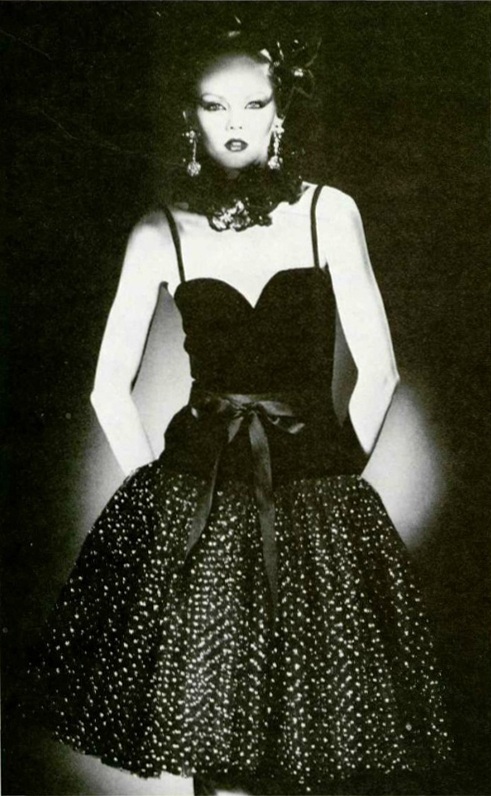
As seen in L’Officiel de la Couture et de la Mode No 655, 1979, this dress has a similar bodice and skirt shape to that of Vogue pattern 2407, however this dress has a skirt of glittering tulle that is suggestive of a tutu.
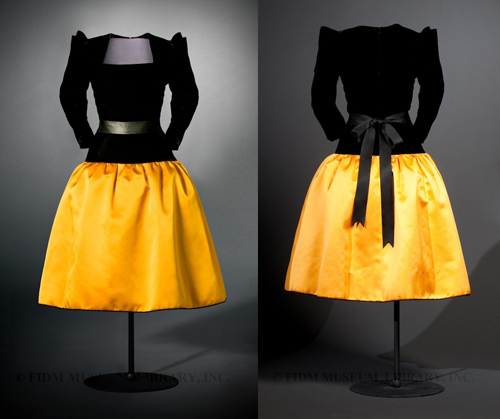
Yves Saint Laurent evening dress of black silk velvet and yellow silk satin, AW 1979-80. This dress was owned by Betsy Bloomindale and was donated to the FIDM in Los Angeles (Image will link to the FIDM’s blog article about the dress).
Interestingly, the three patterns 2406, 2407 and 2408 were not promoted in any issue of Vogue Patterns magazine (as most new designer patterns would have been) or, as far as I know, in any Vogue Patterns News flyer. Also, unusually, the pattern details and yardage requirements were not available in the counter catalog for these patterns and in their place the consumer was advised to ‘Please see pattern envelope for additional information’. Another point of interest is the ‘Vogue Customized Collection’, where an asterix next to the pattern number inside the catalog indicated that the pattern had to be specially ordered from those stores that had this label affixed to the front cover of their Vogue Patterns catalogs. This would most likely have been a policy for smaller or independent pattern retailers who wouldn’t have carried the full range of patterns. Directly below is an image taken from ebay of a copy of the January 1980 catalog with the ‘Customized Vogue Collection’ label affixed to the front cover.
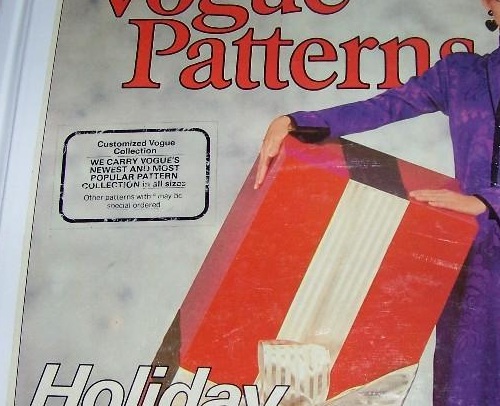
This copy of the Vogue Patterns January 1980 catalog had a label affixed to the front cover stating “Customized Vogue Collection – WE CARRY VOGUE’S NEWEST AND MOST POPULAR PATTERN COLLECTION in all sizes – Other patterns with * may be special ordered”. This included Vogue 2406 and 2407.
It is also interesting that the patterns were made available within the same season as the collection from which the designs were taken – usually patterns would be released the following season.
I must say that these patterns are some of my favorites – it is for the beauty of the designs and for the glamour associated with Haute Couture, and it is because the designs originated from such a special collection from one of the world’s most brilliant designers. What a treat that these patterns were ever produced!
To end the post, below is a photograph of Yves Saint Laurent himself inspecting a display of two of his ‘Picasso’ dresses, most likely photographed sometime in the early to mid 1980s. The black and white ‘Picasso’ dress of Vogue pattern 2406 can be seen on the right.

